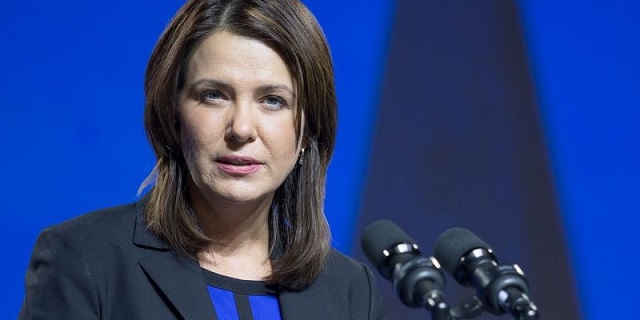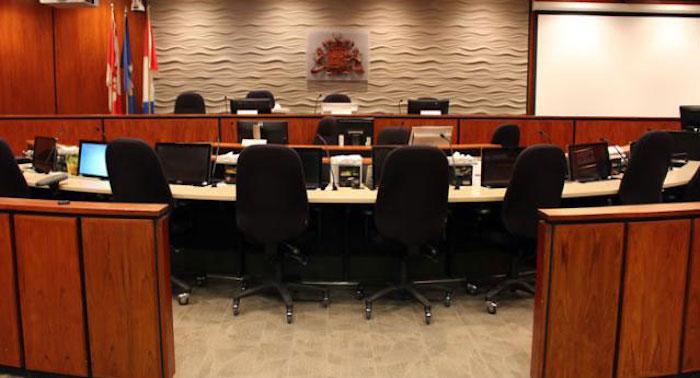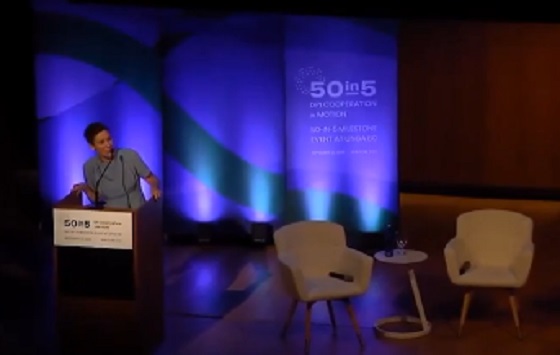Alberta
Premier Smith hammers Liberal government for ‘slightly’ reducing immigration

As so often happens these days the headlines from major news outlets all look like they were written by the same people. All the major news outlets repeated the government talking point that immigration would be reduced significantly. In his news release, Immigration Minister Marc Miller spoke of “controlled targets” and even “marginal” declines in Canada’s population. Minister Miller made it sound like the feds are pulling way back on the number of immigrants being allowed into the country.
A few hours later, Premier Danielle Smith explained how Alberta sees things. According to Premier Smith, immigrants will still be pouring into the country at near record levels. Smith says this new immigration plan will offer almost no relief whatsoever to provinces buckling under the pressure of so many newcomers.
Premier Smith is right. When you take out all the adjectives and the self back-patting, the 2025 – 2027 Immigration Levels Plan shows the number of new immigrants will still hover near record levels.
From the 2025–2027 Immigration Levels Plan.
The levels plan includes controlled targets for temporary residents, specifically international students and foreign workers, as well as for permanent residents.
We are:
- reducing from 500,000 permanent residents to 395,000 in 2025
- reducing from 500,000 permanent residents to 380,000 in 2026
- setting a target of 365,000 permanent residents in 2027
Quick facts:
- Canada’s population has grown in recent years, reaching 41 million in April 2024. Immigration accounted for almost 98% of this growth in 2023, 60% of which can be attributed to temporary residents.
- Francophone immigration will represent
- 8.5% in 2025
- 9.5% in 2026
- 10% in 2027
The Levels Plan also supports efforts to reduce temporary resident volumes to 5% of Canada’s population by the end of 2026. Canada’s temporary population will decrease over the next few years as significantly more temporary residents will transition to being permanent residents or leave Canada compared to new ones arriving. Specifically, compared to each previous year, we will see Canada’s temporary population decline by
- 445,901 in 2025
- 445,662 in 2026
- a modest increase of 17,439 in 2027
It’s interesting how the feds explain the situation with “temporary residents”. This group includes foreign students and temporary workers. Most Canadians would probably be shocked to know just how many people are “temporarily” here.
Minister Miller says this population will decline by 445,901 people in 2025. What he leaves out is that this still allows for just over 2,000,000 foreign students and temporary workers! (5% of 41,000,000 Canadians is 2,050,000)
It’s also very interesting that in the explanation for how the feds plan to cut the number of temporary residents down from about 2.6 million to just over 2 million, is by recognizing that many of the temporary residents will transition to being permanent residents. It’s not clear how that will reduce the number of people in the country. I guess we’ll have to see how that all turns out.
Meanwhile Alberta Premier Danelle Smith and Minister of Immigration and Multiculturalism Muhammad Yaseen issued this joint statement on today’s federal government immigration announcement:
“Alberta has a long history of welcoming newcomers, and we plan to maintain that reputation.
“However, the federal government’s reckless and irresponsible open-border immigration policies, permitting almost 2 million newcomers to enter Canada last year alone, have led to unsustainable financial pressures on all provinces.
“With the cost of food, energy, housing and everything else in this country increasing, and with tens of thousands of new people moving to Alberta monthly, our hospitals and schools are at or above capacity.
“As a province, we need a reprieve from this explosive population growth so we can catch up with these pressures. So do all provinces.
“The federal government’s plan to cut a mere 105,000 new permanent residents will not solve these pressures when they are bringing in almost 2 million additional people annually.
“We call on the government to cut the number of newcomers to Canada from almost 2 million to well under 500,000 annually until further notice.
“Ottawa’s priority should be on reducing the number of temporary foreign workers, international students and asylum seekers—not on reducing provincially selected economic migrants.”
Alberta
Diploma Exams Affected: No school Monday as ATA rejects offer of enhanced mediation

Premier Danielle Smith, Minister of Finance Nate Horner, and Minister of Education Demetrios Nicolaides issued the following statement.
“Yesterday, the Provincial Bargaining and Compensation Office wrote to the Alberta Teachers’ Association (ATA) and formally requested an agreement to enter an enhanced mediation process.
“This process would have ensured that students returned to the classrooms on Monday, and that teachers returned to work.
“Negotiating would have continued with the ATA, Teachers’ Employer Bargaining Association (TEBA) and a third-party mediator to propose a recommended agreement.
“We are very disappointed that the Alberta Teachers’ Association refused this offer. Teachers and students should also be disappointed.
“PBCO made this offer to the ATA because the union has not made a reasonable offer and this strike is impacting students. Alberta’s government is trying to put kids first and bring an end to this strike.
“The offer of enhanced mediation provided a clear path to ending it.
“We want the same things as the ATA: More teachers. More pay for teachers. More educational assistants. And more classrooms.
“This strike has gone on too long and we are extremely concerned about the impact it is having on students.
“We are willing to consider further options to ensure that our next generation gets the world-class education they deserve. After about three weeks, a strike of this nature would reach the threshold of causing irreparable harm to our students’ education.
“The ATA needs to do what is right for its members, and for all Alberta students.
“If it refuses to do so, we will consider further options to bring this strike to an end.”
Diploma exam update
November diploma exams will be optional for students.
With instructional time in schools disrupted due to the teacher strike, the November 2025 diploma exams will now be optional for students. Students who wish to write a diploma exam may request to do so, and their school boards will accommodate the request.
The optional diploma exams apply to all schools provincewide. These exams will still take place on the currently scheduled dates.
Students who choose not to write the November diploma exams can still complete their courses and graduate on time. Their final grade will be based entirely on the school-awarded mark provided by their teacher.
Choosing not to write the November diploma exams will not affect a student’s ability to apply to, be accepted by, or attend post-secondary institutions after graduation.
No changes have been made to the January and June diplomas and provincial achievement tests.
Quick facts
- Students are automatically exempted from writing the November diploma exams but can request to write them.
- School boards must allow the student to write the diploma exam if requested.
Alberta
Alberta taxpayers should know how much their municipal governments spend

From the Fraser Institute
By Tegan Hill and Austin Thompson
Next week, voters across Alberta will go to the polls to elect their local governments. Of course, while the issues vary depending on the city, town or district, all municipal governments spend taxpayer money.
And according to a recent study, Grande Prairie County and Red Deer County were among Alberta’s highest-spending municipalities (on a per-person basis) in 2023 (the latest year of comparable data). Kara Westerlund, president of the Rural Municipalities of Alberta, said that’s no surprise—arguing that it’s expensive to serve a small number of residents spread over large areas.
That challenge is real. In rural areas, fewer people share the cost of roads, parks and emergency services. But high spending isn’t inevitable. Some rural municipalities managed to spend far less, demonstrating that local choices about what services to provide, and how to deliver them, matter.
Consider the contrast in spending levels among rural counties. In 2023, Grande Prairie County and Red Deer County spent $5,413 and $4,619 per person, respectively. Foothills County, by comparison, spent just $2,570 per person. All three counties have relatively low population densities (fewer than seven residents per square kilometre) yet their per-person spending varies widely. (In case you’re wondering, Calgary spent $3,144 and Edmonton spent $3,241.)
Some of that variation reflects differences in the cost of similar services. For example, all three counties provide fire protection but in 2023 this service cost $56.95 per person in Grande Prairie County, $38.51 in Red Deer County and $10.32 in Foothills County. Other spending differences reflect not just how much is spent, but whether a service is offered at all. For instance, in 2023 Grande Prairie County recorded $46,283 in daycare spending, while Red Deer County and Foothills County had none.
Put simply, population density alone simply doesn’t explain why some municipalities spend more than others. Much depends on the choices municipal governments make and how efficiently they deliver services.
Westerlund also dismissed comparisons showing that some counties spend more per person than nearby towns and cities, calling them “apples to oranges.” It’s true that rural municipalities and cities differ—but that doesn’t make comparisons meaningless. After all, whether apples are a good deal depends on the price of other fruit, and a savvy shopper might switch to oranges if they offer better value. In the same way, comparing municipal spending—across all types of communities—helps Albertans judge whether they get good value for their tax dollars.
Every municipality offers a different mix of services and those choices come with different price tags. Consider three nearby municipalities: in 2023, Rockyview County spent $3,419 per person, Calgary spent $3,144 and Airdrie spent $2,187. These differences reflect real trade-offs in the scope, quality and cost of local services. Albertans should decide for themselves which mix of local services best suits their needs—but they can’t do that without clear data on what those services actually cost.
A big municipal tax bill isn’t an inevitable consequence of rural living. How much gets spent in each Alberta municipality depends greatly on the choices made by the mayors, reeves and councillors Albertans will elect next week. And for Albertans to determine whether or not they get good value for their local tax dollars, they must know how much their municipality is spending.
-

 Red Deer1 day ago
Red Deer1 day agoThe City of Red Deer’s Financial Troubles: Here Are The Candidates I Am Voting For And Why.
-

 Business12 hours ago
Business12 hours agoUN, Gates Foundation push for digital ID across 50 nations by 2028
-

 COVID-1913 hours ago
COVID-1913 hours agoThe Trials of Liberty: What the Truckers Taught Canada About Power and Protest
-

 C2C Journal12 hours ago
C2C Journal12 hours agoCharlie Kirk and the Fragility of Civic Peace
-

 espionage1 day ago
espionage1 day agoPEI to Ottawa: Investigate CCP Footprints—Now
-

 Business2 days ago
Business2 days agoCutting Red Tape Could Help Solve Canada’s Doctor Crisis
-

 Energy2 days ago
Energy2 days agoPrince Rupert as the Optimal Destination Port for an Alberta Crude Oil Pipeline –
-

 Bruce Dowbiggin2 days ago
Bruce Dowbiggin2 days agoBrokeback President: We Can’t Quit You, Donald






